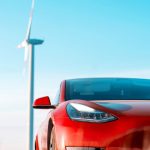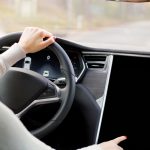Autonomous machines such as drones, delivery vehicles, and tractors are integrating artificial intelligence to navigate the physical world with increased precision. Traditional reliance on sophisticated onboard systems—exemplified by Waymo’s self-driving cars—has set a standard for autonomy. However, industry leaders suggest that combining these onboard technologies with powerful cloud-based AI and detailed spatial maps is necessary for broader adoption. This shift aims to overcome financial and technical barriers that smaller companies face and could enable robots to plan routes and detect hazards before deploying. As physical AI technology evolves, the potential for improved efficiency and safety in sectors ranging from agriculture to logistics continues to expand.
Efforts to advance autonomous vehicles and robotics have historically centered on building better sensors and local processing capabilities. Recent reports and earlier coverage highlighted significant investments required for developing robust onboard systems, with companies like Waymo topping headlines due to their sizable technology budgets. The increasing amount of available earth observation data, gathered from satellite and drone sources, was recognized but often underutilized or hampered by data integration challenges. Now, the focus is shifting toward leveraging this wealth of information through cloud platforms and smarter data processing to enable next-generation autonomy.
What Are the Current Limitations of Physical World AI?
Presently, many autonomous machines perform computations at the “edge,” processing data on-device without much global context. This localized approach can limit the machines’ understanding of broader environments. Some companies, including Wherobots, are addressing this by building what’s known as a “spatial intelligence cloud,” aggregating and refining diverse geospatial data into formats usable by AI models. According to Wherobots’ leadership,
“Physical-world data typically needs heavy engineering to be usable by AI.”
These efforts aim to bridge the gap between local decision-making and global awareness, resulting in more adaptive and informed autonomous systems.
How Does Cloud-Based AI Improve Navigation for Drones and Vehicles?
Cloud-powered platforms enable vehicles and drones to access up-to-date, finely detailed maps, going beyond what onboard sensors can detect in real time. For example, U.S. regulatory changes around BVLOS (Beyond Visual Line of Sight) drone operations could be supported by comprehensive spatial datasets, helping to avoid obstacles like power lines or complex urban features. Using these resources, delivery robots and autonomous cars can optimize their routes, reduce emissions, improve safety, and provide faster services. The coordinated use of cloud data and real-time onboard sensors strikes a balance between localized control and environmental understanding.
How Are Autonomous Tractors Utilizing Spatial Intelligence?
Major agricultural brands such as John Deere are deploying autonomous tractors—like the 8R model—that combine GPS guidance with machine learning. Software platforms from companies like Leaf Agriculture interface with John Deere, Climate Fieldview, and others, standardizing disparate data for effective field management. Using Wherobots technology, these tractors can recognize distinct “management zones,” allowing them to adapt functions to specific soil or terrain characteristics. Leaf Agriculture’s collaboration with Wherobots exemplifies how the integration of spatial intelligence into farm equipment fosters both productivity and sustainability. John Deere has stated,
“The last time agriculture was on the precipice of this much change was when we were on the cusp of replacing the horse and plow.”
Physical world AI is unfolding in stages—first relying on high-tech sensors and now integrating cloud-based solutions that combine spatial data from multiple sources. This evolution addresses cost and scalability challenges that have limited adoption to larger companies in the past. As the spatial intelligence ecosystem matures, it is likely to shape a future where autonomous machines become common in urban settings, rural environments, and industrial applications. For readers interested in deploying or adopting autonomous systems, evaluating cloud integration and spatial data strategies will increasingly dictate the capabilities and competitiveness of such technology. Understanding the development and implementation of platforms like those developed by Wherobots, John Deere, and Leaf Agriculture can inform decisions about investment and operational planning in the robotics and AI sector.








